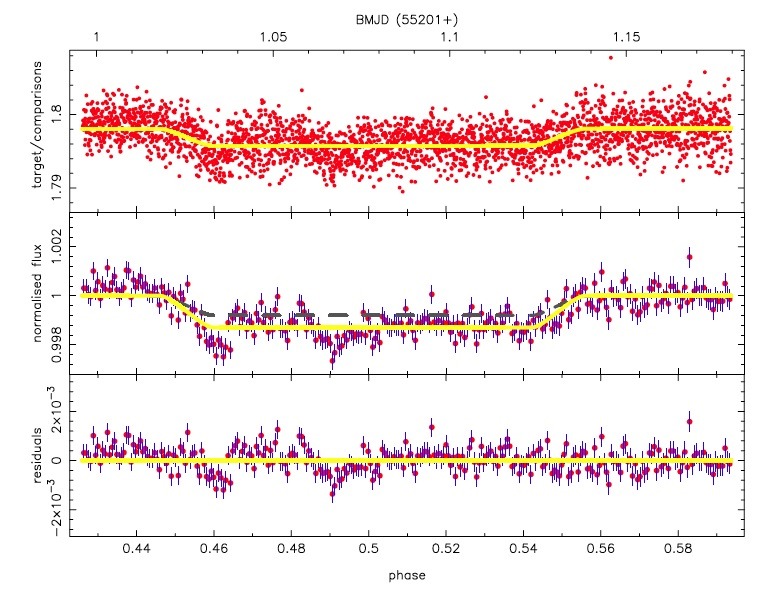Atmospheric scintillation ('twinkling') makes a significant contribution to the measurement noise in photometric observations using ground-based telescopes. For bright targets, scintillation can be the dominant noise source.
We are exploring the effects of scintillation in photometry, to assess its contribution to the overall noise budget and to explore possible methods for reducing scintillation noise. This work is of particular relevance to observations of transiting exoplanets, where astronomers study the small dip in the brightness of a star when a planet crosses its surface as seen from the Earth (or is eclipsed as it passes behind the host star - the 'secondary eclipse').
More information on scintillation and scintillation correction methods, including conjugate-plane photometry, can be found here.

Secondary eclipse of WASP-12b observed in the z' band. Data acquired with Ultracam at the William Herschel telescope. The top panel shows the unbinned raw light curve, with the best-t secondary eclipse model (including background) overplotted in yellow. The middle panel shows the background subtracted and normalised light curve with the data binned into groups of 10 data points, corresponding to 1 minute, again with the best-t model overplotted. The bottom panel shows the residuals after subtraction of the best-t model from the data shown in the middle panel. Credit: Fohring, D., PhD thesis (Durham University), 2014.


/prod01/prodbucket01/media/durham-university/departments-/physics/cfai/CfAI-Webpage-Banner-smaller.jpg)